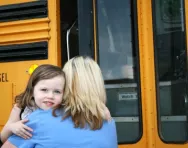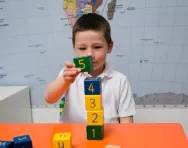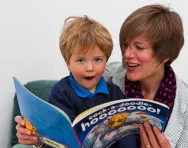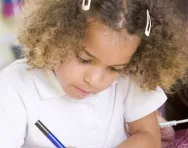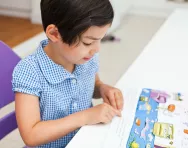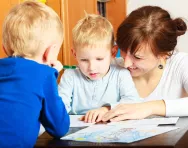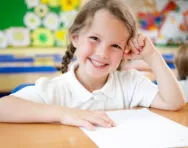Important update from TheSchoolRun
For the past 13 years, TheSchoolRun has been run by a small team of mums working from home, dedicated to providing quality educational resources to primary school parents. Unfortunately, rising supplier costs and falling revenue have made it impossible for us to continue operating, and we’ve had to make the difficult decision to close. The good news: We’ve arranged for another educational provider to take over many of our resources. These will be hosted on a new portal, where the content will be updated and expanded to support your child’s learning.
What this means for subscribers:
- Your subscription is still active, and for now, you can keep using the website as normal — just log in with your usual details to access all our articles and resources*.
- In a few months, all resources will move to the new portal. You’ll continue to have access there until your subscription ends. We’ll send you full details nearer the time.
- As a thank you for your support, we’ll also be sending you 16 primary school eBooks (worth £108.84) to download and keep.
A few changes to be aware of:
- The Learning Journey weekly email has ended, but your child’s plan will still be updated on your dashboard each Monday. Just log in to see the recommended worksheets.
- The 11+ weekly emails have now ended. We sent you all the remaining emails in the series at the end of March — please check your inbox (and spam folder) if you haven’t seen them. You can also follow the full programme here: 11+ Learning Journey.
If you have any questions, please contact us at [email protected]. Thank you for being part of our journey it’s been a privilege to support your family’s learning.
*If you need to reset your password, it will still work as usual. Please check your spam folder if the reset email doesn’t appear in your inbox.
What is the Early Years Foundation Stage profile?
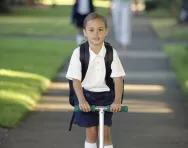
Your Reception child's very first school report is a big milestone, but interpreting it can be a challenge for you. As well as generic comments about your child’s achievements, it will include details of how they’ve performed against the Early Years Foundation Stage (EYFS) profile.
The EYFS profile is completed for every child in the final term of their Reception year, and has three main purposes: to inform you about your child’s development, to make the transition to Year 1 smoother, and to help the Year 1 teacher plan a curriculum that will suit all of the pupils in their new class.
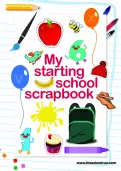
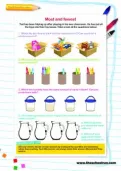
Claim A FREE Starting School Scrapbook!
- Focuses on early English, maths & science skills
- Supports your child’s physical and social development
- Shows them that learning is fun, exciting and amazing
What is the EYFS profile?
The EYFS profile is a summary of your child’s attainment at the end of Reception. It’s not a test, and your child can’t ‘pass’ or ‘fail’.
The profile measures your child’s attainment in areas of learning known as Early Learning Goals (ELGs). These are outlined below, with examples of some of the skills and development they show:
Communication and language
- ELG: Listening, Attention and Understanding (following instructions, responding to questions)
- ELG: Speaking (sharing ideas and explanations for why things might happen, expressing feelings using full sentences, including use of past, present and future tenses)
Physical development
- ELG: Gross Motor Skills (showing good control and coordination in large movements, like climbing)
- ELG: Fine Motor Skills (holding a pencil correctly in preparation for handwriting and using other tools like scissors)
Personal, Social and Emotional Development
- ELG: Self-Regulation (demonstrating an understanding of their own feelings, and other people's)
- ELG: Managing Self (showing independence, being able to explain the reason for rules and managing basic hygiene and personal needs)
- ELG: Building Relationships (playing cooperatively with other children and being aware of others' needs)
Literacy
- ELG: Comprehension (for example, being able to retell a story in their own words)
- ELG: Word reading (being able to say a sound for each letter in the alphabet and at least 10 digraphs)
- ELG: Writing (being able to write recognisable letters and simple sentences)
Maths
- ELG: Number (for example, knowing number bonds to 5)
- ELG: Numerical patterns (being able to count up to and beyond 20 and recognising patterns in numbers up to 10)
Understanding of the world
- ELG: Past and present (understanding the differences between events in the past and the present day and talking about the roles of the people in society)
- ELG: People, Culture and Communities (knowing some similarities and differences between different environments and communities in this country and in other countries)
- ELG: The Natural World (exploring the natural world around us and the changes we see in it)
Expressive arts and design
- ELG: Creating with Materials (experimenting with colour, design, texture, form and function using different materials)
- ELG: Being Imaginative and Expressive (exploring stories and narratives in different mediums, including music and dance)
In each of these areas, the ELGs set out what the average child is expected to be able to do at the age of five.
For example, the Numerical patterns goal says that pupils should be able to count reliably from one to 20, place these numbers in order, and say which number is one less or one more than a given number. They should be able to add and subtract two single-digit numbers, and count on or back to find the answer. They should also be able to solve simple problems like doubling, halving and sharing with numbers up to 10.
In addition to the ELGs, in planning what your child will learn in the EYFS, teachers and school staff are guided by three ‘characteristics of effective learning’. These are:
- Playing and exploring
- Active learning
- Creating and thinking critically.
These three characteristics play an important part in your child’s ability to learn. They also enable their Year 1 teacher to understand their level of development and their learning needs as they move into Key Stage 1.
How are the assessments made?
None of us like to think about our little five-year-olds being assessed, but the process of working out your child’s attainment according to the EYFS profile is very unintrusive. It’s based mainly on their teacher’s knowledge of your child and observations of what they can do.
Throughout their time in Reception, the teacher will watch, listen to and interact with your child (and the others in their class) as they take part not just in formal learning, but also as they play and go about their daily activities like eating their lunch and getting changed for PE. Some observations will be planned – for instance, the teacher might spend an unbroken 10 minutes with your child on a set activity – but others will be spontaneous.
As the teacher observes your child, they’ll record when they see evidence of them meeting an ELG. This could be by making a brief note on a Post-It, taking a photo or just making a mental note to write down later. They’ll be looking to see that your child is consistently and independently showing evidence of fulfilling each ELG. Classroom activities will be planned to make sure children can demonstrate as many of the ELGs as possible.
In addition to teacher observations, the EYFS profile will include evidence from you. For example, you may be given slips of paper to write down your child’s achievements, which you then pass on to your child’s teacher, or the teacher might send home their Learning Journal each half-term with space for you to comment on your child’s progress.
This is important because the EYFS profile is supposed to be a complete picture of your child’s development, not just a snapshot of what happens at school. Sometimes, children might show skills at home that their teacher doesn’t see – for instance, if your child is very shy at school, the teacher might think that they’re not reaching the expected level for self-confidence and self-awareness, but at home, they might be outgoing and chatty.
The profile will also include evidence from your child (for example, the teacher will give them chances to talk about their own learning: ‘How did you find that activity? Was it easy or difficult? What could you do differently next time?’) as well as other adults who are involved with them, such as teaching assistants, midday supervisory assistants (‘dinner ladies’) and the special educational needs coordinator (SENCO).
How are the results reported?
In your Reception child’s EYFS profile, for each of the ELGs, they’ll be given one of the following gradings:
- At the ‘expected’ level of development
- At the ‘emerging’ level of development (in other words, they haven’t quite reached it yet)
Teachers are given clear guidance on how to decide which level of development each child is at. For a child to be at the expected level for an ELG, the teacher has to be confident that they meet the requirements for every part of that goal, although they might be better at some than others (for example, they might be able to add and subtract two single-digit numbers, but be better at adding than subtracting).
What if your child is under- or over-performing?
Don’t panic if your child is rated as ‘emerging’ in one or many ELGs. It’s important to remember that children develop at different rates, and your child hasn’t ‘failed’ if they’re not at the expected standard. It may simply be that the teacher hasn’t observed a particular skill at school – but you’ve seen them demonstrating it at home.
If you have particular concerns, you should be able to arrange a meeting with your child’s teacher. However, bear in mind that one of the main purposes of the EYFS profile is to inform the Year 1 teacher about your child’s progress and how they can cater for them in the coming year. If your child isn’t at the expected level of development, the Reception and Year 1 teachers will work together to decide how they can make the transition to Key Stage 1 as easy as possible for them, and how to support them in the coming year.
